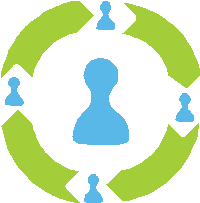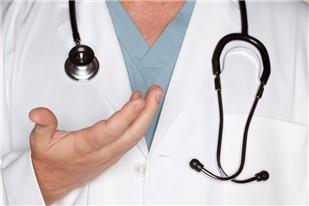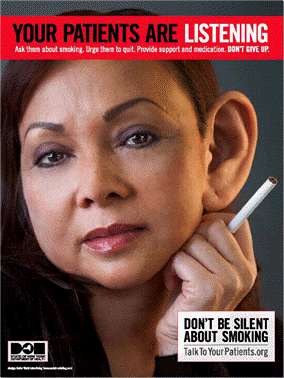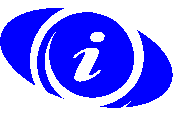April 2010 Volume 26, Number 6
New York State Medicaid Update
The official newsletter of the New York Medicaid Program
David A. Paterson, Governor
State of New York
Richard F. Daines, M.D. Commissioner
New York State DOH
Donna J. Frescatore, Medicaid Director & Deputy Commissioner
Office of Health Insurance Programs

In this issue....
POLICY AND BILLING GUIDANCE
Medicaid Breast Cancer Surgery Centers
Medicaid Managed Care Now Available in Chenango, Delaware and Franklin Counties
Provider Reminder: Check for Excluded/Terminated Employees and Contractors
Prescribers Must Place Diagnosis Code on Fiscal Orders for Supplies
Pharmacies/Suppliers of DME, Medical Supplies, Orthotics, Prosthetics,
and Prescription Footwear:
Operators of OMRDD Certified Residences
PHARMACY UDATES
Need Assistance with the Prior Authorization Process?
National Provider Identifier (NPI) Update
Attention Pharmacies: You Must Bill Medicare First!
NCPDP 5.1 Billing Requirements for Medicare Crossover
Dispense Brand Drugs When Less Expensive Initiative
ALL PROVIDERS
Payment Error Rate Measurement (PERM) Review Results Announced
Important Reminder to Check for Medicaid Eligibility
Smoking Cessation Awareness
Provider Directory
Medicaid Breast Cancer Surgery Centers
Return to Table of Contents

On March 1, 2009, the New York State Department of Health (NYSDOH) implemented a policy to no longer reimburse low-volume facilities for mastectomy or lumpectomy procedures provided to Medicaid fee-for-service beneficiaries. This initiative is part of an ongoing effort to ensure that New York Medicaid purchases cost-effective, high-quality health care for its beneficiaries. Low-volume breast cancer facilities are defined as those averaging fewer than 30 mastectomy and lumpectomy procedures associated with a breast cancer diagnosis over a three-year period.
The Department has completed its second annual review of all-payer surgical volumes during 2006 through 2008 and identified 64 low-volume hospitals and ambulatory surgery centers throughout New York State. Effective April 1, 2010, New York Medicaid will no longer pay for inpatient or outpatient mastectomy or lumpectomy procedures associated with a breast cancer diagnosis provided to Medicaid fee-for-service beneficiaries performed at these 64 facilities. This exclusion does not affect a facility's ability to perform diagnostic or excisional biopsies and post-surgical care (chemotherapy, radiation, reconstruction, etc.) for Medicaid fee-for-service beneficiaries.
Medicaid fee-for-service beneficiaries that require breast cancer surgery should be directed to high-volume facilities. In addition, all managed care plans serving Medicaid beneficiaries are required to contract with hospitals and ambulatory surgery centers exceeding the average volume threshold of 30 surgeries for mastectomy and lumpectomy surgeries. For more information and a list of the hospitals that will continue to provide breast cancer surgery to New York Medicaid beneficiaries, please visit: www.nyhealth.gov/health_care/medicaid/quality/surgery/cancer/breast/.
The Department will annually re-examine all-payer surgical volumes and modify the list of hospitals and ambulatory surgery centers with which Medicaid will contract for such surgeries accordingly. This evaluation is performed using the Statewide Planning and Research Cooperative System (SPARCS) database.
Questions? Please contact the Division of Quality and Evaluation at (518) 486-9012
Medicaid Managed Care Now Available in Chenango, Delaware, and Franklin Counties
Return to Table of Contents

Most Medicaid beneficiaries residing in Chenango, Delaware, and Franklin counties now have the option to enroll in Medicaid Managed Care. New York State Catholic Health Plan (Fidelis) is now available in these counties for both Medicaid Managed Care and Family Health Plus.
Providers must check the Medicaid Eligibility Verification System (MEVS) prior to rendering services to determine Medicaid eligibility and the conditions of Medicaid coverage. Providers are strongly encouraged to check eligibility at each visit as eligibility and enrollment status may change at any time. If the Medicaid beneficiary is enrolled in a managed care plan, the first coverage message will indicate "Managed Care Coordinator."
MEVS will identify the scope of benefits a Medicaid beneficiary's Managed Care Organization provides through specific coverage codes. When using a touch-tone telephone you will hear the "Description" of each covered service. When using either the OMNI 3750 or ePACES the "Coverage Codes" will be displayed. If the message "All" appears, all services will be covered.
Note: Medicaid will not reimburse a provider on a fee-for-service basis if MEVS indicates that the service is covered by the plan.
Providers may call the eMedNY Call Center at (800) 343-9000 with any Medicaid billing issues. Medicaid beneficiaries should contact their local department of social services to learn more about managed care.
Questions? Please contact the Bureau of Program Planning & Implementation at (518) 473-1134.
Provider Reminder: Check for Excluded/Terminated Employees and Contractors
Return to Table of Contents

The Office of the Medicaid Inspector General (OMIG) reminds providers that they have an obligation to screen employees, prospective employees, and contractors, both individuals and entities, to determine if they have been excluded or terminated from participation in federal health care programs or New York Medicaid.
Providers must use the OMIG Website at www.omig.state.ny.us. to perform this process. Click the "Resources" tab, then "Disqualified Individuals." In addition to the NYS OMIG's list, providers should also screen individuals/entities against the DHHS OIG's list available at: http://oig.hhs.gov/fraud/exclusions.asp. and the General Services Administrations (GSA) List of Parties Excluded from Federal Procurement and Non-Procurement programs available at: https://www.epls.gov.
Web searches should be performed for each individual upon hire and all employees, vendors, and referral sources should be rescreened on a monthly basis at a minimum. This will enable providers to capture exclusions and terminations that may have taken place since the previous search. The OMIG Website allows providers to download a listing of all individuals to be matched against employees, vendors or referral sources, or providers can select the "short list" option, which offers a list of all changes that have occurred over the previous 30 days.
The OMIG Website contains a listing of individuals or entities whose participation in New York Medicaid has been restricted, terminated, or excluded under the provisions of 18 NYCRR §504.7(b) - (h), 18 NYCRR §515.3, or 18 NYCRR §515.7. Complete details, including definitions and regulatory citations, are also posted on the OMIG Website.
Questions? Please contact Peter Zayicek, Office of the Medicaid Inspector General, at (518) 474-9739.

ATTENTION PRESCRIBERS: Prescribers Must Place Diagnosis Code on Fiscal Orders for Supplies
Return to Table of Contents
New York Medicaid requires a valid diagnosis code on all new fiscal orders for supplies, durable medical equipment, prosthetics, and orthotics. The diagnosis code must support the medical necessity for the item ordered. Failure to provide a diagnosis code on the fiscal order will result in delays for the beneficiary requiring necessary services.
Questions? Please contact the Division of Provider Relations and Utilization Management at (800) 342-3005, option #1.
Attention: Pharmacies and Suppliers of Durable Medical Equipment (DME), Medical Supplies, Orthotics, Prosthetics, and Prescription Footwear
Claiming Services for Individuals Living in Residences Certified By OMRDD
Return to Table of Contents
Drugs, durable medical equipment (DME), medical supplies, orthotics, prosthetics, and prescription footwear may not be separately billed to Medicaid when such items are already included in the rate of the recipient's residential care service. The Office of Mental Retardation and Developmental Disabilities (OMRDD) certifies a variety of residential models. This article describes the extent to which such items may or may not be included in the residential rates of OMRDD certified facilities. The intent is to summarize, but not alter, existing policy.
Developmental Centers/Specialty Hospital
These institutional care settings include funding for most types of supplies, drugs (both prescription and non-prescription), DME, and prescription footwear. Items should be billed directly to the residence operator, not fee-for-service Medicaid, unless written instructions are received from the residence operator to do otherwise. These institutions may authorize the direct billing of Medicaid for custom equipment required to transition individuals to non-institutional living arrangements, and for other purposes.
Intermediate Care Facilities for the Developmentally Disabled, Supervised Individualized Residential Alternatives, and Supervised Community Residences (MEVS Codes: 38, NH38 & 49)
Item classes always excluded from the residential service rate (bill fee-for-service Medicaid):
- Orthotics, Prosthetics, Prescription Footwear, Prescription Drugs, and
- Person-specific wheelchairs and other person-specific DME.
("Person-specific DME" refers to both custom-fitted and custom-made DME. When custom fitted or custom made components are added to standard base equipment, the equipment is considered custom-fitted. The terms "custom-fitted" and "custom-made" are defined in the DME Provider Manual).
Items always included in the residential service rate (bill residence operator, not fee-for-service Medicaid):
- Disposable Gloves (sterile and non-sterile)
- Diapers and Underpads
- Over-The-Counter Drugs, except insulin.1
1In general, drugs - including OTC drugs-- are billed using NDC codes. Consumable items billed using HCPCS item codes (e.g., food thickeners, enteral formulae) are considered supplies. Note that food thickeners and enteral formulae are NOT in the list of supplies that must be covered directly by Intermediate Care Facilities for the Developmentally Disabled and supervised Community Residences and supervised Individualized Residential Alternatives. Food thickeners and enteral formulae may be billed to fee-for-service Medicaid. Diabetic supplies, even though recently shifted from HCPCS to NDC billing, are still considered supplies and may be billed to fee-for-service Medicaid.
Item classes usually excluded from the residential service rate:
- All other medical supplies and "standard" DME ("Standard" DME is any item that is neither custom-fitted nor custom made).
- Most medical supplies and standard DME are excluded from residential service rates. You should, however, verify the status of specific items with the residence operator prior to billing Medicaid. If the item is funded in the residential rate, bill the residence operator instead of Medicaid.
Supportive Individualized Residential Alternatives , Supportive Community Residences, and Family Care Homes (MEVS Code 48)
There is no general prohibition against separate fee-for-service billing of diapers, underpads, OTC drugs, or gloves (for the personal use of the resident) for individuals living in supportive residences or family care homes. Moreover, these residences rarely include funding for medical supplies, DME of any kind, drugs of any kind, orthotics, prosthetics, or prescription footwear. Items whose primary purpose is the assistance and/or protection of paid caregivers (e.g., most uses of gloves) should be billed directly to the residence operator. All other items may be billed to fee-for-service Medicaid, unless you are otherwise instructed by the residence operator.
Note: Where applicable, the rules outlined above apply to maintenance and repair services (including separately itemized repair parts), as well as the original issue of equipment.
Attention: Operators of OMRDD Certified Residences
Return to Table of Contents
Please review the previous article directed to pharmacies, durable medical equipment (DME) dealers, and medical supply firms. The article clarifies the types of items typically included and excluded in the rates of various types of OMRDD residences. As a reminder, items included in a residential service rate must be purchased directly by the residence operator. Items not included in a residential rate may be billed to the resident's Medicaid card.
The article also notes that the operators of Intermediate Care Facilities for the Developmentally Disabled (ICF/DDs), supervised Community Residences (CRs), and supervised Individualized Residential Alternatives (IRAs), should be consulted prior to billing supplies and DME that is neither custom-fitted nor custom-made to fee-for-service Medicaid (eMedNY). Providers are obligated to verify the status of specific items, in writing if requested, when questions arise as to whether the item is or is not included in the residential service rate. Further, providers may be required to refund Medicaid the value of separately billed DME purchases that, on audit or review, are found to have been the financial responsibility of the residence.
An item is considered "included" in your facility rate when:
- It replaces an item originally purchased using facility funds reported in a cost report or budget upon which the facility's current rate is based; or
- It involves repair or replacement of original facility furnishings or equipment; or
- It is not specific to the needs of an individual resident, but is to be used by several residents or future residents assigned to the same room; or
- It is intended primarily to assist or protect paid residence staff, not the resident (e.g., gloves); or
- The facility is required to assume financial responsibility for the item under 14 NYCRR 635-9.1.
Further, ICF/DDs, supervised CRs, and supervised IRAs are required to assume the costs of gloves, diapers, underpads, and over-the-counter drugs (except insulin) required by their residents.
If questions remain regarding the status of a particular item, please discuss the issue with your OMRDD Rate Setting contact person: Steve Ellrott (ICF/DDs, CRs, Specialty Hospital) (518) 486-4289 or Rosemary Daley (IRAs) (518) 402-4107. State operated facilities should contact their DDSO or the Bureau of Cost and Revenue Services in Albany.

NEW YORK MEDICAID & FAMILY HEALTH PLUS PROVIDERS
Need Assistance with the Prior Authorization Process?
Return to Table of Contents
Materials have been developed to assist providers with the New York Medicaid Pharmacy Prior Authorization (PA) process. The Quick Punch Flow Chart provides callers with the appropriate prompt sequence needed to bypass call center messaging and proceed directly to the desired call center location.
Updated educational materials are now available for viewing online at: https://newyork.fhsc.com/providers/PA_forms.asp. The Pharmacy PA Flow Chart helps providers understand the PA Process. The Desk Aid provides a brief overview of Pharmacy Prior Authorization programs, program updates, Websites, and contact information.
For additional questions on the Medicaid Pharmacy Prior Authorization Program, please contact an Education Specialist at (518) 951-2051.
National Provider Identifier (NPI) Update
Return to Table of Contents

The purpose of the National Provider Identifier (NPI) is to uniquely identify a health care provider in standard transactions, such as health care claims. NPIs may also be used to identify individual health care providers on prescription claims.
The proper procedure is for pharmacies to bill prescriptions to New York Medicaid with the prescribing practitioner's individual NPI. Using the NPI ensures that pharmacists bill Medicaid using the actual prescriber. The prescribing practitioner should be identified on the prescription label, as required by the New York State Board of Pharmacy and the Bureau of Narcotic Enforcement. Since September 1, 2008, New York Medicaid has required the NPI of the individual prescriber (this includes unlicensed residents, interns, and foreign physicians in training programs) in order to process pharmacy claims.
Please be aware that although unlicensed residents, interns, and foreign physicians in training programs do not always meet the HIPAA definition of a health care provider they are eligible for individual NPIs. A healthcare provider taxonomy code for classifying providers who are not yet licensed (based on state licensing requirements) is available for use: Student, Health Care (390200000X).
Information is available at the Centers for Medicare & Medicaid Services (CMS) Website under the NPI Frequently Asked Questions section, ID # 5809, and ID#8479 at: http://www.cms.hhs.gov/NationalProvIdentStand/01_Overview.asp#TopOfPage.
The supervising physician's State license number will no longer be required for pharmacy claims if the unlicensed resident, intern, or a foreign physician in a training program provides their individual NPI.
Helpful Websites:
CMS link to the NPI final rule: www.cms.hhs.gov/NationalProvIdentStand/Downloads/NPIfinalrule.pdf.
NPI registry link: https://nppes.cms.hhs.gov/NPPES/Welcome.do.
Attention Pharmacies
You Must Bill Medicare First!
Return to Table of Contents
Claim edit 152 is used to ensure that Medicaid is billed as a last resort when a beneficiary is both Medicare and Medicaid eligible (dual eligible) and the drug or supply is covered by Medicare Part B. Pharmacies not enrolled in Medicare and attempting to bill Medicaid for drugs and supplies for a dual eligible will not be reimbursed.
For a beneficiary with both Medicare and Medicaid coverage, all charges for Medicare covered drugs and supplies must be billed to Medicare first. Only after Medicare payment information is received, may a claim be submitted for Medicaid reimbursement. All Medicare benefits must be maximized prior to billing Medicaid.
If a claim for a drug or supply is denied for edit 152, the pharmacy must take the following steps:
- Bill Medicare Part B as the primary payer; and
- Bill Medicaid as secondary payer for any Medicare Part B deductible, coinsurance or co-payment (for NCPDP billing requirements).
The Medicaid/Medicare beneficiary must be financially held harmless by participating providers. If a Medicaid provider delivers care or services to a person covered by Medicare and Medicaid, the beneficiary may not be billed. Note: Medicaid beneficiaries cannot be billed for any covered services, except for Medicaid co-payments (if applicable).
Once Medicaid is billed, all Medicare payment information must be maintained in the file at the pharmacy for six years following the date of payment for audit purposes. Pharmacies not enrolled in Medicare should refer beneficiaries who are dual eligible to "Find Suppliers of Medical Equipment in Your Area" in the Search Tools section of the Medicare Website at: www.Medicare.gov.
Additional information on Pharmacy Policy for Medicaid/Medicare reimbursement is available for viewing online at: www.emedny.org/ProviderManuals/Pharmacy/PDFS/Pharmacy_Policy_Guidelines.pdf
For billing questions, contact the eMedNY Call Center at (800) 343-9000.
For Medicaid pharmacy policy and operations questions, contact (518) 486-3209.
NCPDP 5.1 Billing Requirements for Medicare Crossover
Return to Table of Contents
The following information must be completed on claims for beneficiaries that are eligible for both Medicare and Medicaid (dual eligible):
- Enter a value of '13' in field 340-7C "Other Payer ID" to identify the payer as Medicare Part B.
- At a minimum, the first four of the following five qualifiers must be submitted when billing Medicaid. All of the required information is readily available on the remittance you receive from Medicare reflecting the results of their processing of the claim.
| NCPDP Field 342-HC "Other Payer Amount Paid Qualifier" | NCPDP Field 431-DV "Other Payer Amount Paid" (Medicare Dollar Amounts) |
|---|---|
| 07 - Medicare Approved | Enter the amount from the Medicare remittance identified as the approved amount. |
| 08 - Medicare Paid | Enter the amount of the payment you received from Medicare. |
| 99 1st Occurrence - Deductible Amount | Enter the amount from the Medicare remittance identified as applying to the patient's deductible. (Identified on the 835 remittance from Medicare as: CAS*PR*1*$$.$$) |
| 99 2nd Occurrence - Coinsurance Amount | Enter the amount from the Medicare remittance identified as the patient's coinsurance amount. (Identified on the 835 remittance from Medicare as: CAS*PR*2*$$.$$) |
| 99 3rd Occurrence - Co-Payment Amount | Enter the amount from the Medicare remittance identified as the patient's co-pay amount. (Identified on the 835 remittance from Medicare as: CAS*PR*3*$$.$$) |
Additional information on billing can be found in the Pro-DUR ECCA Provider Manual available online at http://www.emedny.org/ProviderManuals/Pharmacy/index.html.
Important Notice for Prescribers and Pharmacists
Dispense Brand Drugs When Less Expensive Initiative
Return to Table of Contents
Effective April 26, 2010, New York Medicaid implemented a new cost containment initiative which promotes the use of certain multi-source brand name drugs when the cost of the brand name drug is less expensive than the generic equivalent. Claims submitted for generic drugs designated for inclusion in this program will receive the following NCPDP messages:
| NCPDP Code | Message | MEVS Code | Message |
|---|---|---|---|
| 78 | Cost Exceeds Maximum | 421 | Brand Required Instead of Generic Equivalent |
Generic drugs included in this program require Prior Authorization. Products are identified on the Medicaid List of Reimbursable Drugs with a "C" in the "PA" code column (http://www.emedny.org/info/formfile.html.).
Brand name drugs included in this program:
- have a generic copayment;
- have an enhanced dispensing fee (equal to generic dispensing fee);
- will be paid at the Brand Name Drug reimbursement rate or usual and customary price, whichever is lower (neither the SMAC nor FUL will be applied);
- will not require 'Dispense as Written' (DAW) or 'Brand Medically Necessary';
- will not require prior authorization.
Once it is determined that the generic drug is more cost-effective than the brand name equivalent, the prior authorization requirement will be removed for the generic drug. Please keep in mind that multi-source brand name drugs may be included in the Mandatory Generic Drug Program; again promoting the use of the most cost-effective product.
Questions? Please contact the Bureau of Pharmacy Policy and Operations at (518) 486-3209.
Medicaid Fee-for-Service Claim Review
Payment Error Rate Measurement (PERM) Review Results Announced
Return to Table of Contents
New York State was part of the Federal Payment Error Rate Measurement Results (PERM) review for Federal Fiscal Year (FFY) 2008 (October 1, 2007 through September 30, 2008). The Centers for Medicare and Medicaid Services (CMS) and their contractor, Health Data Insights (HDI) reviewed 520 paid claims during the audit review period. The Office of the Medicaid Inspector General (OMIG) mirrored the Federal Review to ensure compliance by the selected providers and to challenge the findings where it was believed that CMS and HDI misapplied Federal or State regulations.
CMS and HDI identified two payment errors, claims submitted by providers which were not supported by appropriate medical records showing the need for, and provision of the service. One error was for a claim that the provider admitted was billed in error. The second error involved a coding issue that had no dollar impact. The OMIG also uncovered five additional errors which were reported to CMS. Two of these claims were found to have coding errors, one claim was not medically necessary, one claim had a policy violation, and another was over billed by a provider.
The main findings that CMS and HDI had for the fee-for-service claims were referred to as "Data Processing Errors." CMS and HDI identified eight claims in error. Seven of these errors were for untimely filed claims. New York Medicaid was cited for not having the proper documentation to justify the untimely filing of the claims. New York State required that providers use an exception code when they filed an untimely claim to justify the delay of the submission. The corresponding documentation supporting the exception code is audited after payment. CMS considered the lack of documentation for untimely claims to be a Medicaid error. The other data processing error occurred when the payment system failed to deduct the co-pay amount from the total payment amount. This programming error has been corrected.
The next PERM cycle for New York Medicaid claims will occur in FFY 2011. Reviews will begin after the first quarter of 2011. As with the previous PERM review, the cooperation of providers is appreciated in responding to PERM information requests.
The OMIG would like to thank all Medicaid providers involved in providing updated contact information and documentation for the PERM review. Overall, the review went smoothly and the error rate assigned to the payment of Medicaid fee-for-service claims (excluding the errors found and reported by the OMIG) was 1.45%. The OMIG believes this indicates that New York Medicaid providers are making the effort to ensure compliance with the rules for claiming Medicaid reimbursement.
Important Reminder to Check Medicaid Eligibility
Return to Table of Contents
The New York State Department of Health (NYSDOH) continues to see a high volume of claims denied for Edit 00162 - Recipient Ineligible on Service Date. Providers are required to check the eligibility of a beneficiary's Medicaid coverage prior to billing and delivery of services.
MEVS offers a variety of ways to check eligibility:
ePACES: A free, easy to use method for accessing eMedNY over the Internet. Eligibility information is available within seconds using this method. Refer to http://www.emedny.org/HIPAA/SupportDocs/ePACES.html or contact the eMedNY Call Center at (800) 343-9000 about enrolling in ePACES.
eMedNY eXchange: Allows users to transfer files from their computer via a Web-based interface. Users are assigned an "inbox" and can send and receive transaction files in an email-like fashion. Transaction files are "attached" and sent to eMedNY for processing. Responses are delivered to the user's inbox, and can be downloaded to the user's computer.
Batch Transmission: The standard process for batch authorization transmissions. FTP allows users to transfer files of eligibility requests from your computer to the eMedNY host (upload), and response files are returned to your computer (download). Batch file transmission responses are usually returned within 24 hours.
PC-HOST LINK: Requires a PC, a dial-up modem, and a program that can send a specific message protocol to eMedNY. Verification requests are sent to eMedNY and verification responses are returned within seconds. The PC-Host method is suggested for low to medium volume (fewer than 2,000 transactions per month) providers. Please contact the eMedNY Call Center at (800) 343-9000 for more information.
Audio Response Unit (ARU): Access client eligibility information by contacting the eMedNY Touchtone Telephone Verification System at: (800) 997-1111, (800) 225-3040, or (800) 394-1234.
Questions? Please contact the eMedNY Call Center at (800) 343-9000.

By providing counseling, pharmacotherapy, and referrals, you can double your patients' chances of successfully quitting. For more information, please visit www.talktoyourpatients.org or call the NY State Smokers' Quitline at 1-866-NY-QUITS (1-866-697-8487).
Do you suspect that a Medicaid provider or an enrollee has engaged in fraudulent activities?
Return to Table of Contents
Please Call: 1-877-87FRAUD or (212 417-4570)
Your call will remain confidential.
You can also complete a Complaint Form online at:
www.omig.state.ny.us

Provider Directory
Return to Table of Contents
Office of the Medicaid Inspector General:
http://www.omig.state.ny.us or call (518) 473-3782 with general
inquiries or 1-877-87FRAUD with suspected fraud complaints or allegations.
This contact information can also be used for Provider Self-Disclosures.
Questions about billing and performing MEVS transactions?
Please contact eMedNY Call Center at: (800) 343-9000.
Provider Training
To sign up for a provider seminar in your area, please enroll online at:
http://www.emedny.org/training/index.aspx
For individual training requests, call (800) 343-9000 or email: emednyproviderrelations@csc.com
Enrollee Eligibility
Call the Touchtone Telephone Verification System at any of the numbers below:
(800) 997-1111 (800) 225-3040 (800) 394-1234.
Address Change?
Questions should be directed to the eMedNY Call Center at: (800) 343-9000.
Fee-for-Service Providers
A change of address form is available at:
http://www.emedny.org/info/ProviderEnrollment/index.html
Rate-Based/Institutional Providers
A change of address form is available at:
http://www.emedny.org/info/ProviderEnrollment/index.html
Does your enrollment file need to be updated because you've experienced a change in ownership?
Fee-for-Service Providers please call (518) 402-7032
Rate-Based/Institutional Providers please call (518) 474-3575
Comments and Suggestions Regarding This Publication?
Please contact the editor, Kelli Kudlack, at:
medicaidupdate@health.state.ny.us
Medicaid Update is a monthly publication of the New York State Department of Health containing information regarding the care of those enrolled in the Medicaid Program.